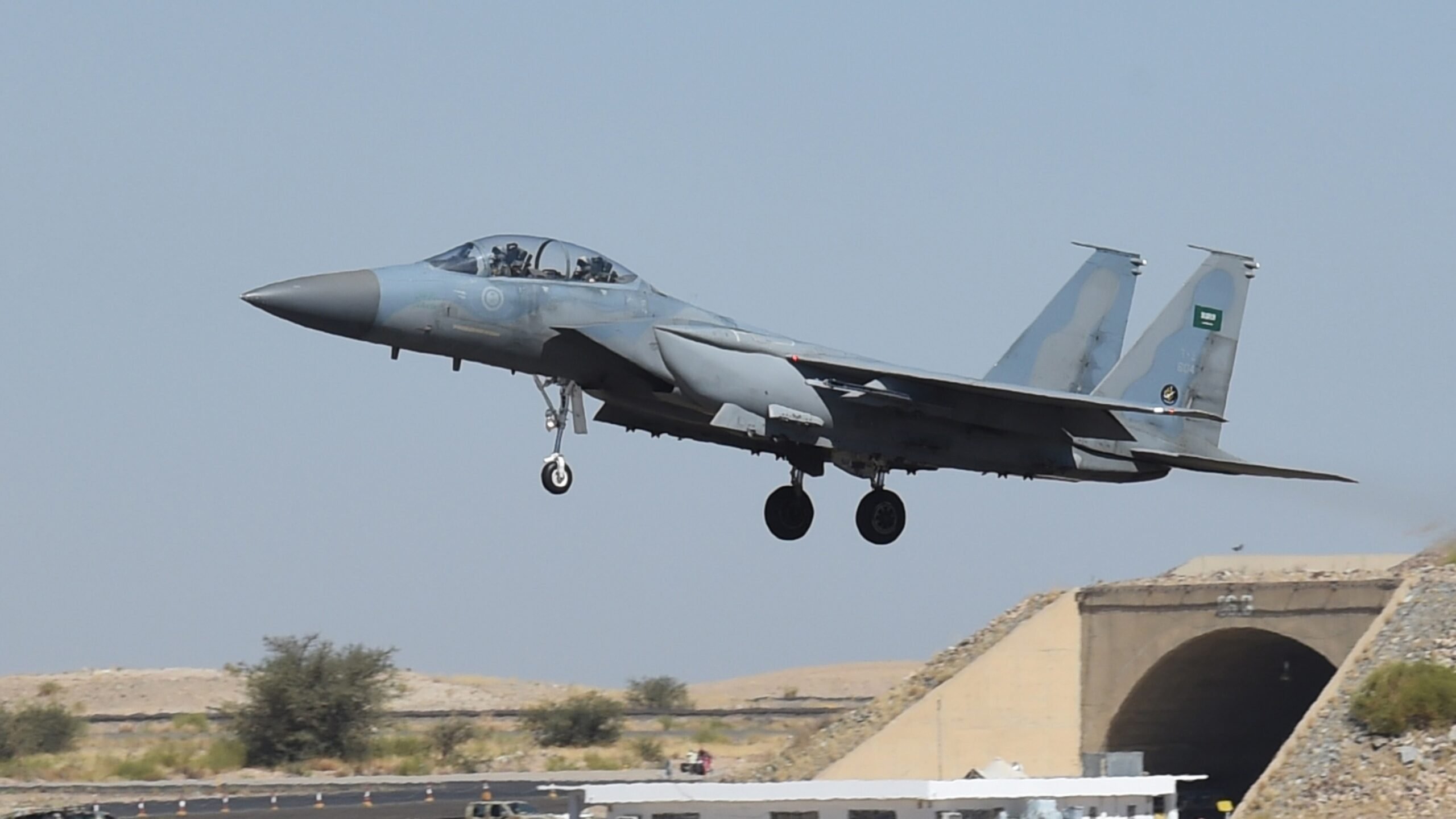
A Saudi F-15 fighter jet landing at the Khamis Mushayt military airbase, some 880 km from the capital Riyadh. (FAYEZ NURELDINE/AFP via Getty Images)
WORLD DEFENSE SHOW: The first delivery of CH-47 Chinook helicopters to Saudi Arabia will go on as scheduled this year, and a Boeing official tells Breaking Defense that the company is already turning its eyes to potential upgrade efforts for other platforms already operating in the Kingdom.
“The Chinooks are on schedule for delivery, and we are sure that [the Saudi Air Force] will be able to operate those in the Kingdom this year. KSA will be the 21st global operator of the Chinooks,” Rick Lemaster, Boeing’s vice president for international sales in the defense sector, told Breaking Defense at the World Defense Show in the Saudi capital of Riyadh.
Saudi Arabia signed in 2016 a $3.5-billion Foreign Military Sales agreement with the United States to procure 48 Chinooks along with support and parts. Lemaster noted that despite the COVID-19 lockdown and interruption of the supply chain Boeing was able to complete the Chinooks on schedule.
The Chinook deal is hardly the first deal between the Kingdom and America’s largest aerospace company. Saudi Arabia is one of the biggest operators of Boeing-made defense platforms in the Middle East region, with 207 F-15 SA, and 62 F-15 Eagle jet fighters in service. Those are joined by six E/RE-3A AWACS early warning aircraft and seven KC-707 aircraft.
Lemaster said that most of the Saudi F-15SA warplanes that were upgraded recently “are great aircrafts” and don’t require any upgrade. But the company sees potential elsewhere in the fleet.
“When we look at their [Saudi Air Force] force structure we see that they have some of the older F-15S aircrafts, which are equivalent to the C & D models, that probably could stand a refresh, Lemaster said. “And we do think that there is a real value in the F-15EX kind of configuration that would be useful where the Saudi Air Force going forward.”
He refused to elaborate on whether Boeing was in talks with the Saudi Air Force on this topic. However, he estimated that about 50 F-15s in Saudi arsenals are due for upgrade.
“The USAF put us on contract last year for 144 F-15EX and I think this could go up to 200 aircrafts. I think there is an opportunity there to countries out there to benefit from this,” he added. (As a rule, the most customers who buy into a system reduces the price-per-unit across the board.)
Lemaster said the Saudis have successfully used their F-15SA to “kill” cruise missiles fired by the Iranian-backed Houthi militias in Yemen, a missile defense capability that the Kingdom needs, given a recent spate of attacks on both Saudi and United Arab Emirates targets in the region.
“The Saudis are using their F-15 to go shoot down cruise missiles. That is the adaptability of the weapon system and of the Saudis to deal with this threat in a way that probably was not thought of previously,” Lemaster said.
As for the Saudi E-3 Sentry AWACS, Lemaster noted that the platform is ready to be replaced by a more advanced one, and the E-7 AEWC Wedgetail is a good option. He pointed out that whenever the US Air Force eventually decides to acquire the E-7, this will influence the decision of many countries that would want to purchase it as well.
“The US Air Force has talked publicly about a future desire to buy the E-7 Airborne Electronic Warfare and Control, the Wedgetail that we developed to Australia and exported to Turkey, to South Korea and most recently to the UK,” Lemaster said. “The E-7 aircraft will be a good fit as a follow on to the current [Saudi] AWACS aircrafts.”
In November, a different Boeing executive told Breaking Defense he expected the USAF to select the Wedgetail in 2022, and there have been few signs the American service is looking at other options for their mission need.






















